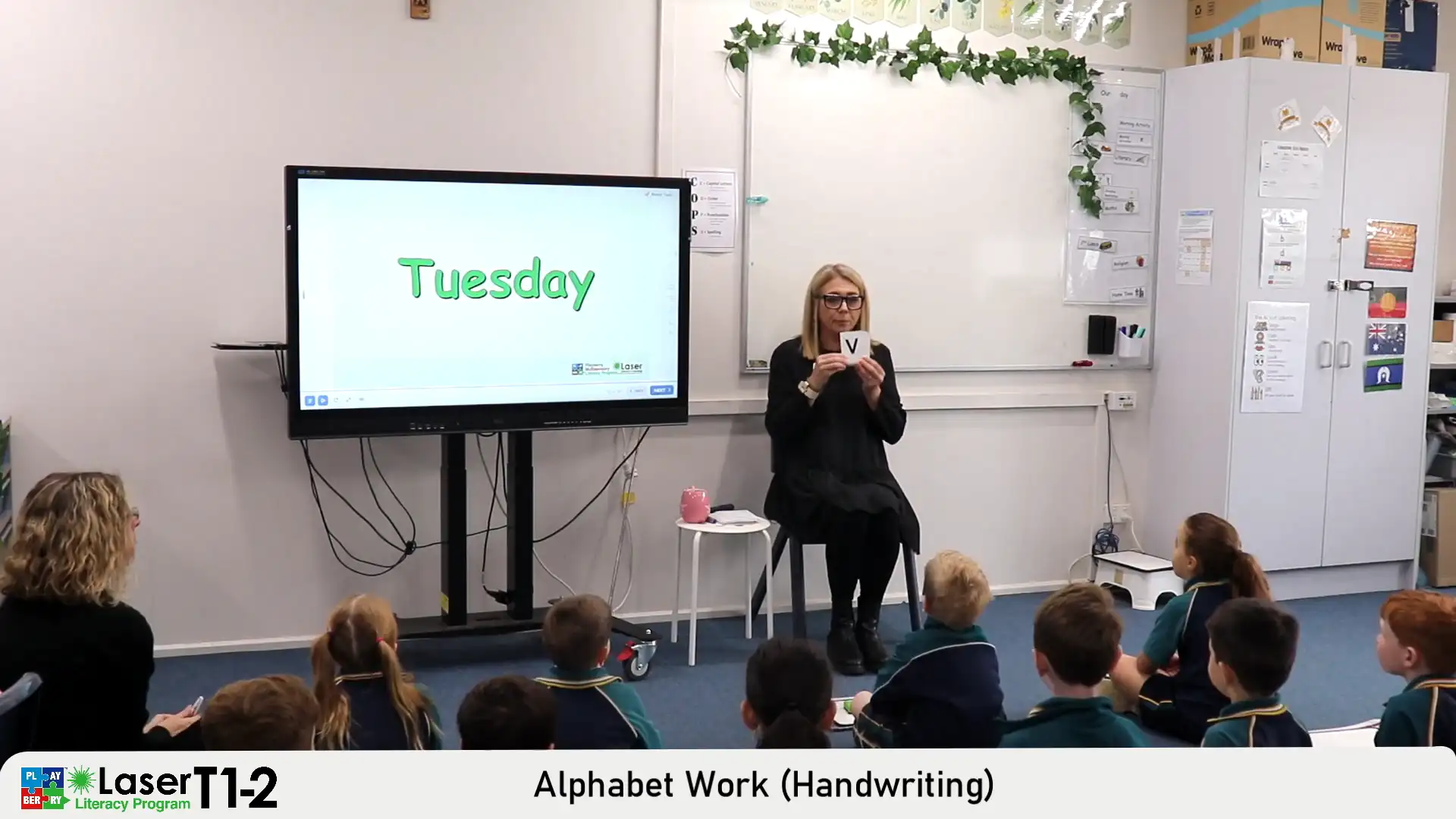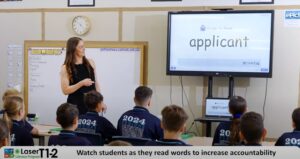Masterclass Notes: Sarah Battistella
Phase 2 Playberry Laser Phonology Lesson
This is a running log of a lesson with Bec Pawson’s year 1 class taught by Sarah Battistella. I’ve made notes of strategies used by Sarah that might not be noticed by someone new to teaching this way. I have highlighted strategies that keep the lesson moving at a good pace and ensure students are sticking to established routines. Students are always looking where Sarah wants them looking and thinking about what Sarah wants students thinking about. This managing students’ cognitive load.
Pay attention to Sarah’s consistency and economic use of language. This is key to moving lessons at a good pace and getting through in around 45-50 minutes.
You can see the work Bec has put in establishing the routines.
Settling the Class
“Boards parked, hands in laps, and eyes on the screen”
Notice Sarah’s succinct language – explicit, unambiguous. No unnecessary language to cognitively overload any students. This is known as economy of language and is incredibly important to effective teaching.
Redirect:
“Lauren, eyes on the screen”
Sarah, then moves on without waiting for Lauren. This is called take up time. There is no over-dwelling and waiting students to follow the instruction with comments like “now please Lauren, we’re waiting”. Sarah moves on with the lesson with the expectation that Lauren will comply. Sarah checks with a glance to see that Lauren has complied.
Review: Alphabet
(Refer to Teachers’ Manual for directions)
Letter Naming using Alphabet Deck
“Eyes on the cards, let’s go …”
Short, clear direction. Sarah’s tone friendly and light.
Sarah keeps the alphabet routine fast paced and visibly scans the students to show she’s watching and expecting full participation. Students say letter names clearly.
Review: Alphabet Handwriting
(Refer to Teachers’ Manual for directions)
Handwriting the alphabet
“Fantastic, can you please group your pens and be ready to write the alphabet … waiting for everybody … lids off … OK let’s begin.”
Notice there’s no waiting for slower students to be ready. This is deliberate. It communicates that the lesson will move on and students need to keep with the pace of the lesson rather than the teacher waiting1.
Sarah then keeps the pace, cueing with the word ‘next’. Because Sarah is watching students, she can slow down if needed but her intention is to bring students’ pace up rather than have the pace dictated by the slowest students. Slower students do speed up with practice2.
When Sarah needs to correct a student, she keeps her language direct, brief and kind:
“Make sure your tall letters are nice and tall so they come right up”
This is not a time to question students with “what’s wrong with that letter”, teachers must be efficient with language. Every unnecessary word creates extraneous cognitive for students.
“Chin it”
This command is brief. The chin it routine involves putting lids on markers. This has been taught, and practiced, and students have chunked the two processes of putting the lid on and holding the whiteboard under the chin. Sarah saying “chin it” prompts the routine. Bec (classroom teacher) has also worked on students holding boards under chins and nowhere else. This takes insistence and practice.
Sarah re-teaches the formation of the lower case ‘p’. This diagnostic teaching depends on watching students as they write the alphabet. With no unnecessary language, Sarah briefly explains what she saw with in terms of the common error (students writing an upper case ‘p’). She then models on the screen what it should look like and then directs students to practice.
“Park your boards please Year 1” (with hand gesture)
Without delay, Sarah sits down and gets the Reading Card Pack. This signals that the lesson is rolling on and students must move quickly.
“No rubbing out, parking your boards”
It is common for students to fluff about with erasing. Sarah has added an efficiency here by directing students not to wipe. A routine on how to erase boards is worth teaching, otherwise students become distracted by erasing letter-by-letter.






